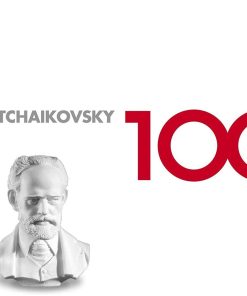STRAVINSKY/RAVEL/PROKOFIEV: BALLETS – JEAN-BAPTISTE FONLUPT, piano La Dolce Volta
$ 23,99 $ 14,39

Against the backdrop of its decors, ballet offers itself up as a spectacle, arousing admiration and enchantment. In the early twentieth century, from the Palais Garnier to the Bolshoi, from the Châtelet to the Mariinsky, the shimmering colours of the orchestra were often combined with the innovative choreography of the Ballets Russes. The music to which these ballets were danced, assigned to illustrious composers, could hardly be for piano, which was tolerated only to accompany the dancers in their rehearsal studios. But is that really the case? If so, then why are there so many piano versions made by the composers themselves, alongside the orchestral ones? Jean- Baptiste Fonlupt answers that question here with dazzling imagination and virtuosity.

IGOR STRAVINSKY (1882-1971)
THREE MOVEMENTS FROM PETRUSHKA
Russian Dance 2’34
In Petrushka’s Room 4’39
The Shrovetide Fair 8’49
MAURICE RAVEL (1875-1937)
La Valse 13’07
SERGUEÏ PROKOFIEV (1891-1953)
ROMEO AND JULIET: TEN PIECES FOR PIANO OP.75 (EXCERPTS)
Juliet as a Young Girl 3’52
Mercutio 2’23
Montagues and Capulets 4’21
Romeo and Juliet before Parting10’05
MAURICE RAVEL (1875-1937)
VALSES NOBLES ET SENTIMENTALES
Modéré, très franc 1’22
Assez lent, avec une expression intense 2’41
Modéré 1’27
Assez animé 1’10
Presque lent, dans un sentiment intime 1’39
Vif 0’46
Moins vif 3’08
Épilogue, lent 4’37
Fast Shipping and Professional Packing
Due to our longstanding partnership with UPS FedEx DHL and other leading international carriers, we are able to provide a range of shipping options. Our warehouse staff are highly trained to pack your goods exactly according to the specifications that we supply. Your goods will undergo a thorough examination and will be safely packaged prior to being sent out. Everyday we deliver hundreds of packages to our customers from all over the world. This is an indication of our dedication to being the largest online retailer worldwide. Warehouses and distribution centers can be located in Europe as well as the USA.
Orders with more than 1 item are assigned processing periods for each item.
Before shipment, all ordered products will be thoroughly inspected. Today, most orders will be shipped within 48 hours. The estimated delivery time is between 3-7 days.
Returns
The stock is constantly changing. It's not entirely managed by us since we are involved with multiple parties such as the factory and our storage. The actual stock can fluctuate at any time. Please understand it may happen that your order will be out of stock when the order is placed.
Our policy is valid for 30 days. If you haven't received your product within 30 days, we're not able to issue either a return or exchange.
You are able to return a product if it is unused and in the same condition when you received it. It must also still remain in the original packaging.
Related products
MUSIC CDS
MUSIC CDS
MUSIC CDS
MUSIC CDS
MUSIC CDS



















































